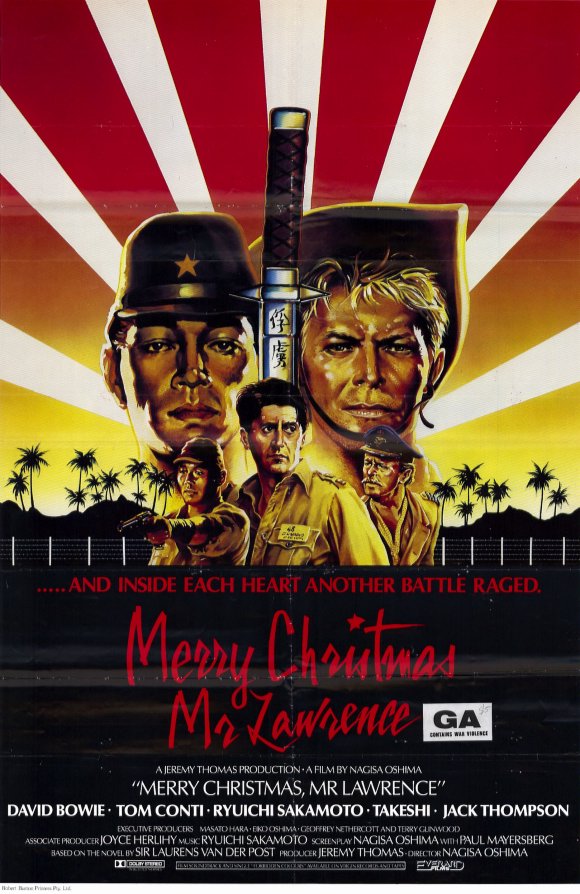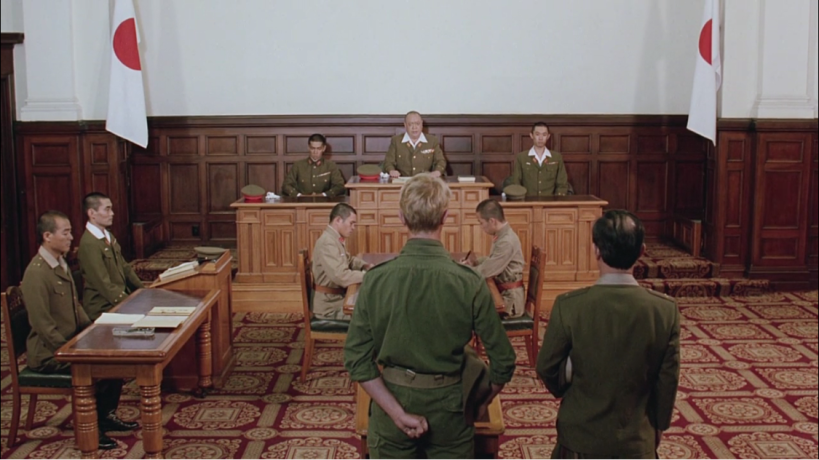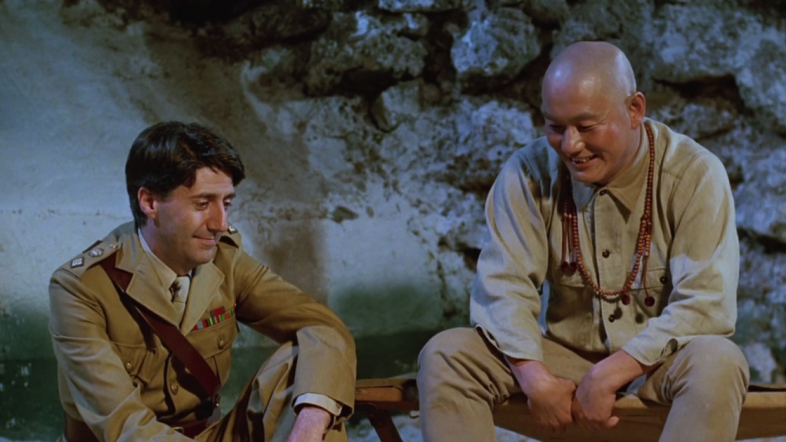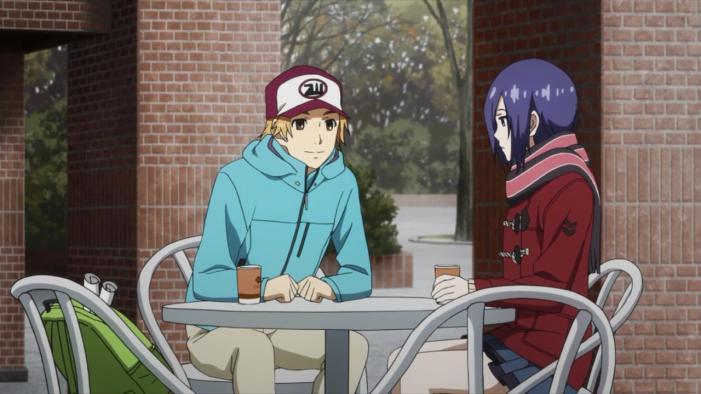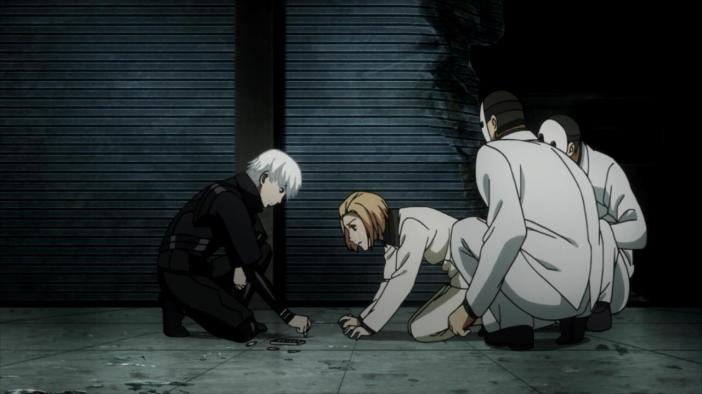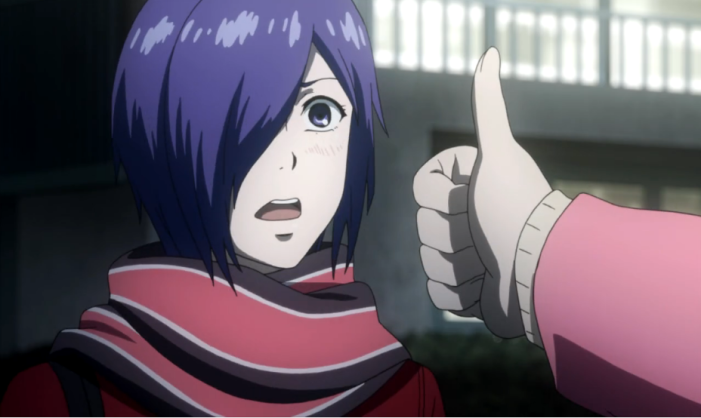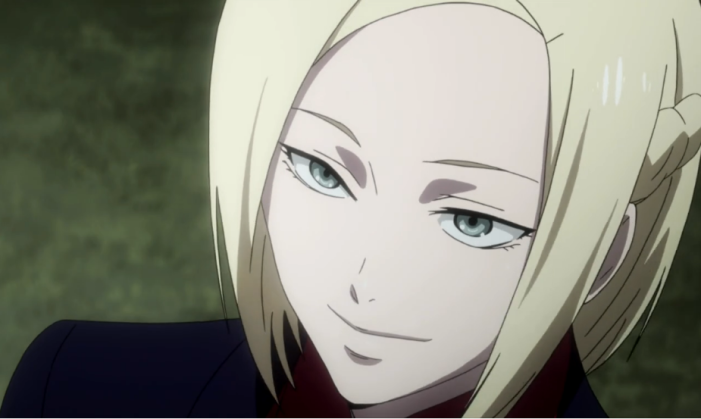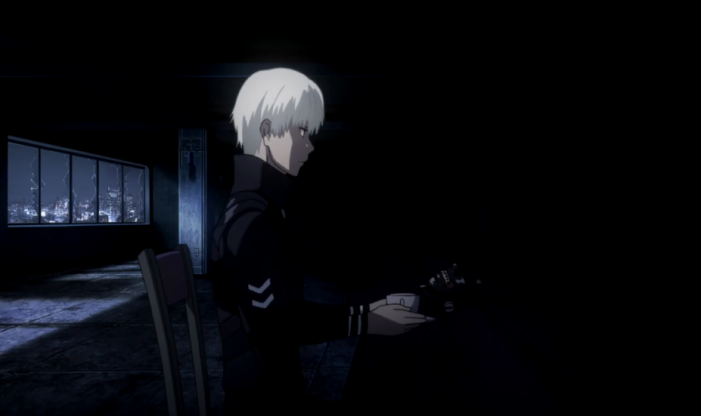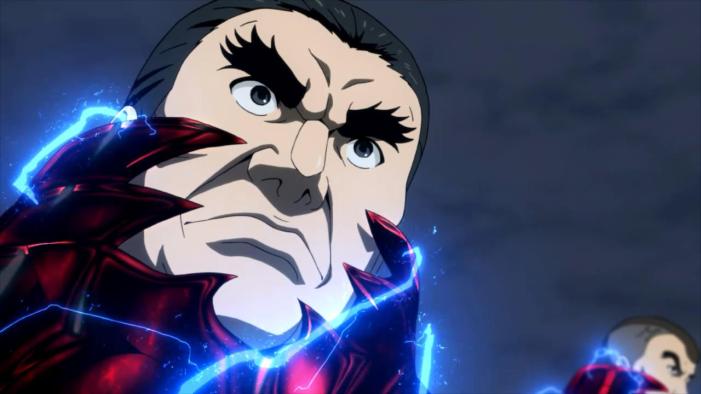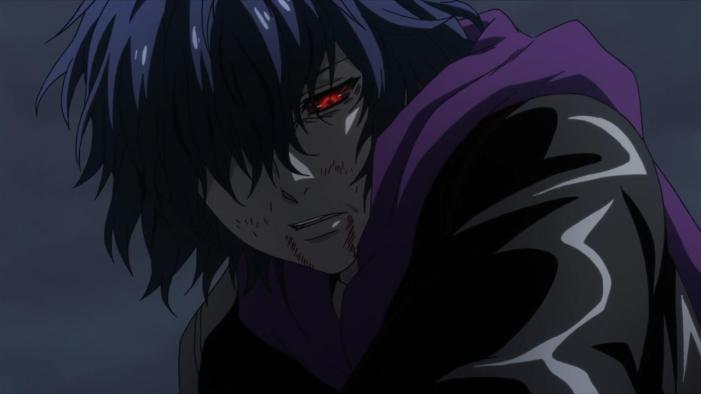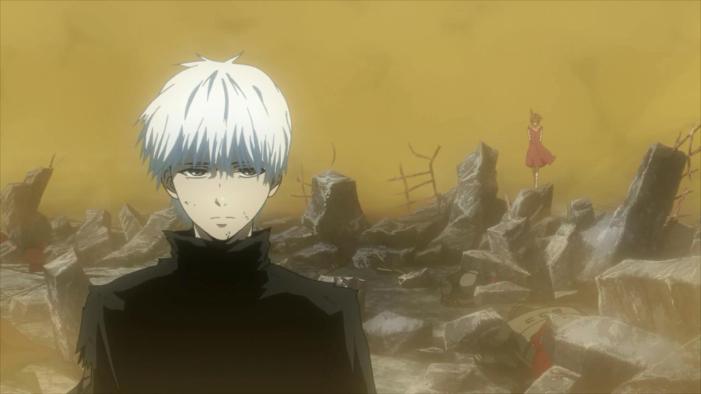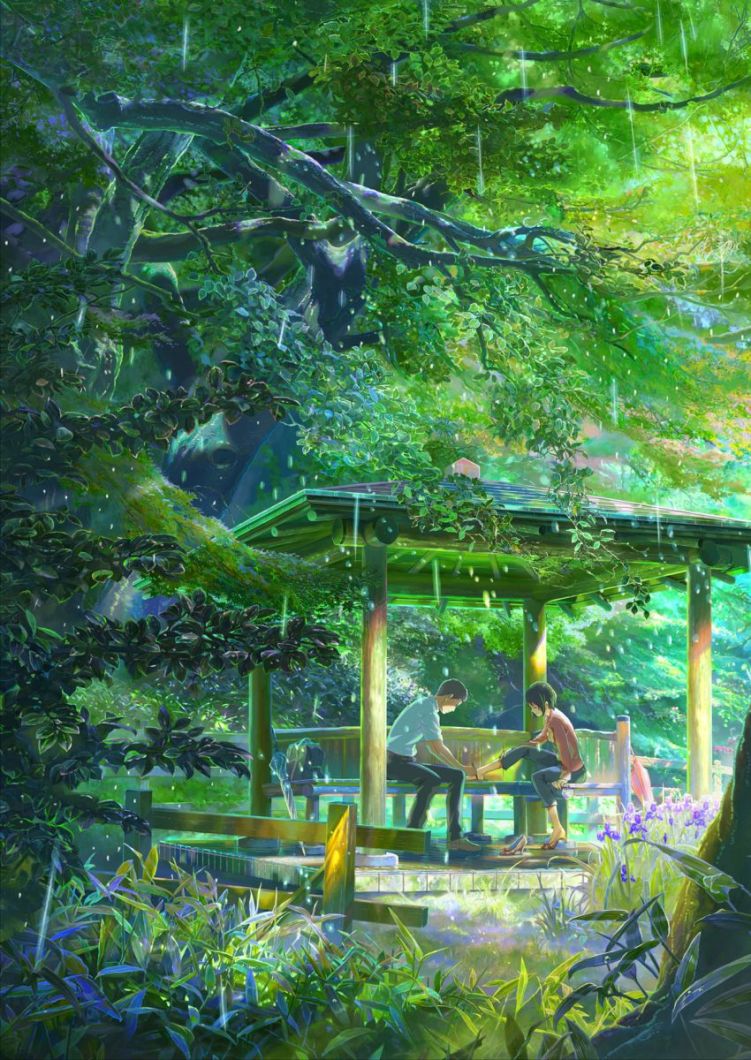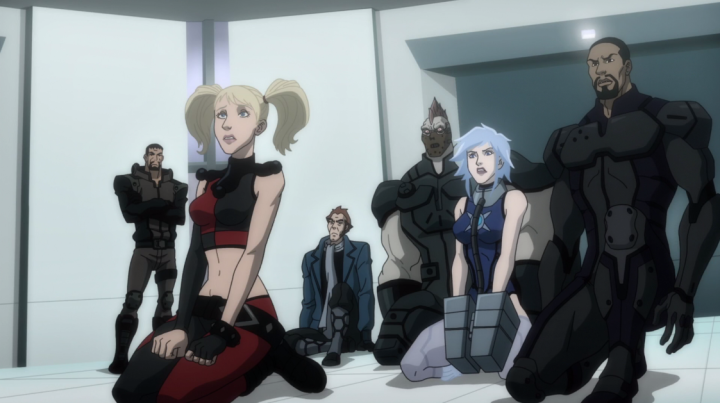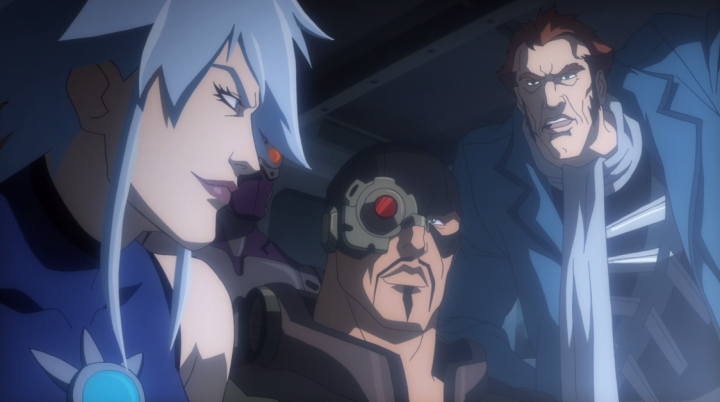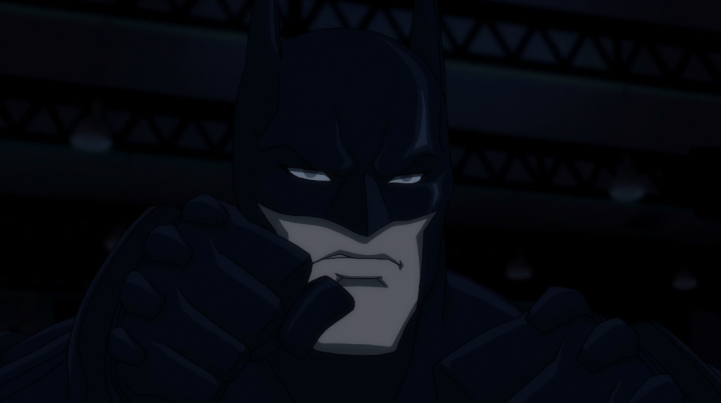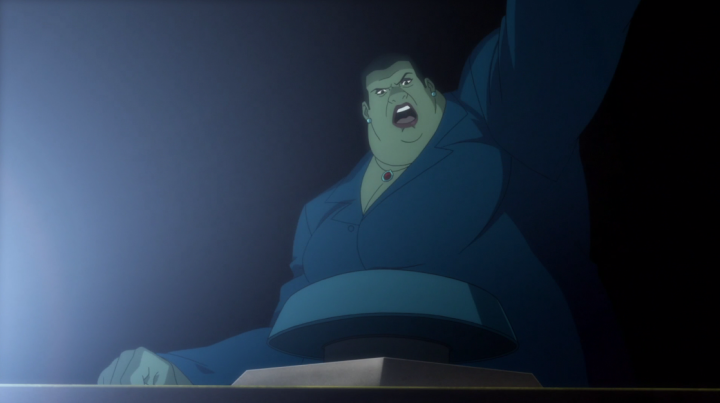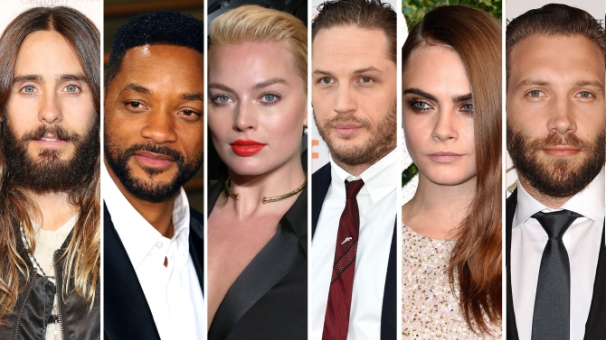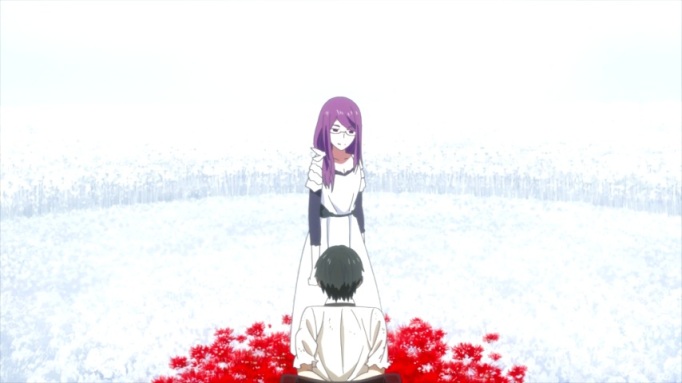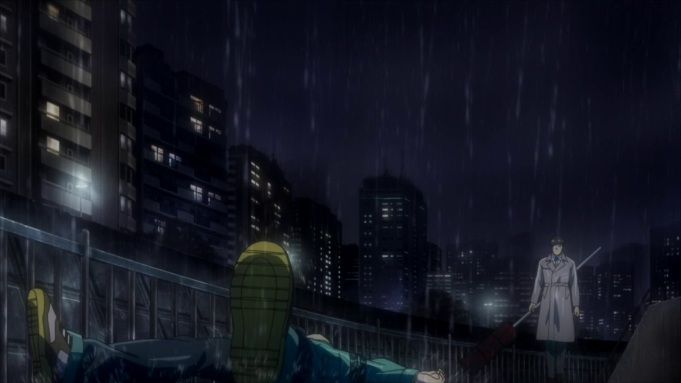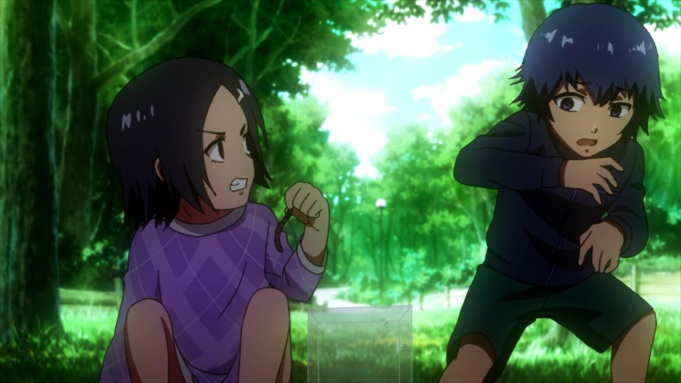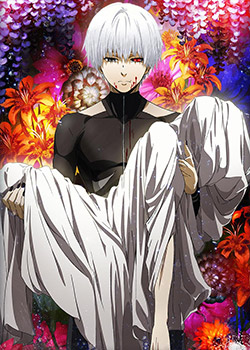Warning: Spoilers
This is a paper I wrote for my Japanese Film and Culture class back in early June of 2015 detailing my thematic analysis of the Japanese-British film Merry Christmas, Mr. Lawrence (1983).
Merry Christmas, Mr. Lawrence (1983) is a Japanese-British film which portrays the difficulties and struggles which arise from two starkly different and conflicting cultures. The characters spend a majority of the film disagreeing with the disciplines and philosophies of a culture not of their own. The film goes on, though, to show that the labels and definitions of “culture” are sometimes aimless, and do nothing more then promote a sort of stubbornness and adamant intolerance. Characters such as Captain Yonoi and Captain Hicksley refuse to concede the supposed righteousness of their own culture and the apparent indignation of the other’s, and as a result, are bigoted and disdainful. However, the film shows that such attitudes inhibit the engagement of an undeniable constant throughout all individuals: compassion. Even though they all express it differently through their cultures, compassion is felt and exhibited by most every character of the film. The dichotomy shared between Captain Yonoi and Jack Celliers—as kindred spirits with mutual compassion—is never truly fulfilled because of the dogged prejudice and allegiance to “culture” which afflicts Captain Yonoi. The relationship between John Lawrence and Sergeant Hara, however, demonstrates the potential bonds and emotional fulfillment that come with shedding the stubbornness and intolerance of “culture” and sharing within another human being the application of compassion. Through its characters and their relationships, Merry Christmas, Mr. Lawrence illustrates how the self-righteous intolerance sometimes exhibited by “culture” prevents individuals from realizing and understanding each other by a mutual compassion.
All the characters of the film display a level of compassion with which they connect and relate to others; however, some individuals are too restricted by a stubbornness to their culture to share such compassion. Captain Hicksley and Captain Yonoi are both such characters; they spend much of the film aggressively rejecting the principles and ideals of the other’s culture. During De Jong’s execution, Captain Yonoi forces the Western prisoners to line up and spectate the event. The ways that the Japanese and Westerners each approach and assess the moral validity of this execution speaks volumes of both their differences and similarities. The Westerners deem the execution utterly indignant and obscene; “If you had any humanity left in you, sir, you would let us leave,” objects Hicksley. Without so much as a second thought, Hicksley labels the execution as unethical, and believes that the Japanese are putting De Jong to death in an inhumane and barbaric manner—there is no respect or dignity in this style of death. However, the Japanese perceive this style of death as honorable and noble, evidenced by when Sergeant Hara thought it merciful to tell De Jong “you may commit Harakiri.” They are baffled at the apparent ignorance on the Westerners’ part of these sentiments. This stark contrast in cultural perspective supposedly illustrates a clear conflict and opposition between the ideologies and people of these two sides.
However, more than anything else, this dichotomy expresses a great deal of similarity. In both cases, these people are channeling an immense compassion and respect for their fellow man; it is merely their methods—the practices of their culture—which differ. Captain Hicksley views the execution as savage and disrespectful, and is so impassioned with anger because he cares deeply for the dignity of De Jong. The fact that he has (presumably) never met, let alone gotten to know, De Jong, and yet so fervently defends his honor and death, indicates the immense compassion with which he concerns other individuals. To him, no man should be forcibly end his life by his own hand—left to suffer at the slowness of his subsequent death. This same level of compassion is shared by his Japanese captors. Such manner of execution is noble in the eyes of the Japanese—better for a man to put himself to death than the enemy to. These two sides share a much of the same brand of compassion—however, their dogged rigidness to their respective cultures prevents them from realizing this. Hicksley much too angrily refuses to empathize with the Japanese, labeling Lawrence a “Jap lover”—a traitor to his righteous Western culture—when Lawrence attempts to understand the ways of the Japanese, and Captain Yonoi absolutely declines any compromise with his practice, shouting “This is the right way! I am right!” when his decisions are questioned by the Westerners.
The cinematography of the scene perfectly encapsulates this dichotomy. With the Westerners and Japanese lined up on opposite ends of De Jong, the viewer can that these two sides connect with each other on the mutual compassion they harbor towards their fellow man—represented by De Jong. However, the labels and self-righteousness they associate with their own cultures keep them separated and grouped on opposing sides, both figuratively and physically—unable and unwilling to share their compassion with each other.
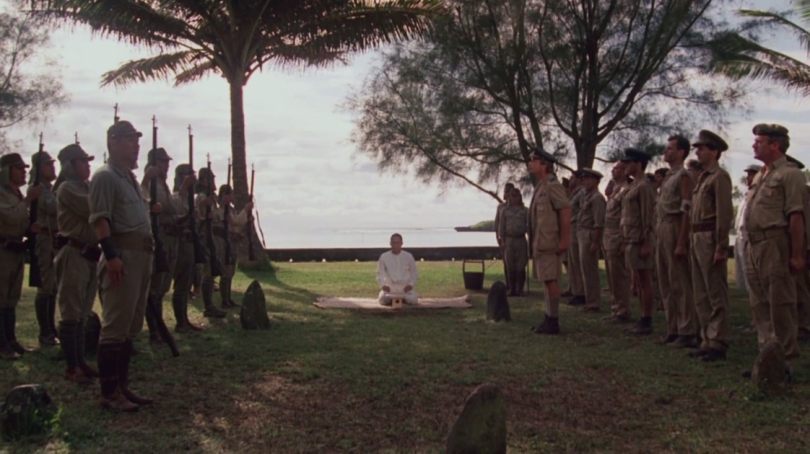
The sort of inability to understand each other, which assignments of culture in this film promote, is further realized in the relationship between Captain Yonoi and Jack Celliers. Initially, these two individuals seem to come closer to sharing compassion than any other Japanese and Westerner. Captain Yonoi—a man angrily dismissing any rejection of his righteous Japanese ways—very surprisingly displays consideration when he is told the harsh sounds of his kendo practice disturb the sick men. “That sick officer too?…I do not want the prisoners to be upset” Yonoi inquires, showcasing his concern for Jack Celliers and the prisoners. This is the first and one of the many few instances during the entire film which Yonoi concedes in the absoluteness of his culture. His kendo is a manifestation of all the sort of honor and discipline enacted by his Japanese culture—the fact that its noises perturb the Westerners represents the sort of disagreement on their part with the Japanese. It is unexpected that Yonoi does not immediately erupt in intense anger when Lawrence tells him of the sick men’s displeasure, thus indicating a seldom seen level of concession and compassion with the Westerners from Yonoi.
This sentiment, of course, is catalyzed by Celliers, and the compassion which Yonoi almost instantly feels towards him. It is easy to call these two kindred spirits, for both are haunted by their pasts, where they were unable to express their compassion to their close ones. For Yonoi, he agonizes over not being able to honor the deaths of his comrades by dying right with them, and Celliers anguishes over his coldness which cost his brother his passion and affections. In both these cases, the individual harbors an unfulfilled and eager compassion—differing only in the cultural practice by which such was unused. The two then mean to express this kindness to each other, and in turn, the people of the other’s culture. Celliers does not understand or engage in Japanese ideals, but he never wholly disdains or disrespects them. “What a funny face. Beautiful eyes, though,” describes Celliers of Hara, acknowledging both the difference in superficial, cultural practices and the appeal—the exact similarity—in the soul and compassion. Though, Yonoi remains far more stringent and adamant in his culture, yet he consistently compromises his rigorous discipline for Celliers—to the idea of sharing compassion with other cultures. This implies a relinquishment of culture in order to empathize with individuals who only different on a cursory level.
However, he is never able to fully concede his fixation with his culture. At the film’s climax, Yonoi, in a gesture of such cultural adamance, demands the attendance of all the prisoners—including the deathly sick ones. Though he previously expressed his compassion for the prisoners, he stubbornly continues with this aimless parade, as some demonstration for the dogged tenacity which afflicts him, despite displaying brief but clear instances of doubt and sympathy at the sick prisoners. Again, this indicates an inability to share compassion because of an unshakable loyalty to cultural ideals. Yonoi clearly feels sympathy towards the sick prisoners, but is so adamant in the righteousness of his decisions that he continues mercilessly. When Celliers breaks rank and walks up to Yonoi to kiss his cheeks, he makes one final effort to appeal to Yonoi’s compassion. This is an unacceptable offense to Yonoi’s bushido code, yet he is utterly unable to bring his sword down on Celliers, and becomes incapacitated, leaving Celliers to be beaten by the Japanese soldiers. The outcome of Celliers’ actions—of his last attempt to share empathy with Yonoi—is only half successful, since Yonoi makes no visible effort to save Celliers from the soldiers, remaining weighed down by the indecision and conflict between his connection with Celliers and the his cultural disciplines, resulting in Celliers’ ultimate death. As a result, Yonoi and Celliers never appease their unfulfilled compassions with each other, and thus, to all people not of their culture. This illustrates that culture must be substantially relinquished in order to respect and empathize with the each other.
In this film, the labels and strict adherence to separate cultures inhibits a degree of empathy and understanding among individuals. All characters in the film showcase the ability to feel and share compassion in one way or the other. However, a self-righteous tenacity to their own culture prevents the mutual experience of this compassion. Captain Hicksley and Captain Yonoi spend a majority of the film mired by a dogged tenacity to their respective cultures, seldom yielding to the sensibilities of the other, and thus never connecting or understanding each other on a deep and substantial level. The relationship between Celliers and Yonoi, though more considerable in shared compassion, is never fully realized because of Yonoi’s unshakable faithfulness to his disciplines. One should realize that the absoluteness and self-righteous quality of following one’s culture promotes intolerance and prevents the engagement of a shared quality in being human. The idea and practices of culture are not inherently at fault, but the stubborn mentality and resulting bigotry towards other ways of thinking proves especially problematic. The unlikely friendship between Mr. Lawrence and Sergeant Hara demonstrates the successful approach to culture which promotes shared compassion. Lawrence and Hara spend a great deal of the film questioning the other’s culture, but also indulging and attempting to understand it. Lawrence speaks Japanese and appeals to the sensibilities of Japanese culture—attempting to empathize with its beauty (“My fondest memories of Japan are of the snow”), while Hara does the same for the Westerners, searching for the true culprit of the radio to deliver a distinctly Western brand of justice (“I’m Father Christmas tonight”). In the film’s concluding scene, Lawrence and Hara display a great deal of fondness and compassion towards one another, but are still appropriated by cultural differences—of the second war between nations. Despite the success of their mutual understanding and empathy, the obsession of the righteousness of one’s culture keeps the widespread application of compassion at bay. “Well if it was up to me. I’d release you today, send you back to your family,” Lawrence tells Hara, demonstrating that such obsession must be done away with in order to fully and widely understand each other with a shared compassion.
